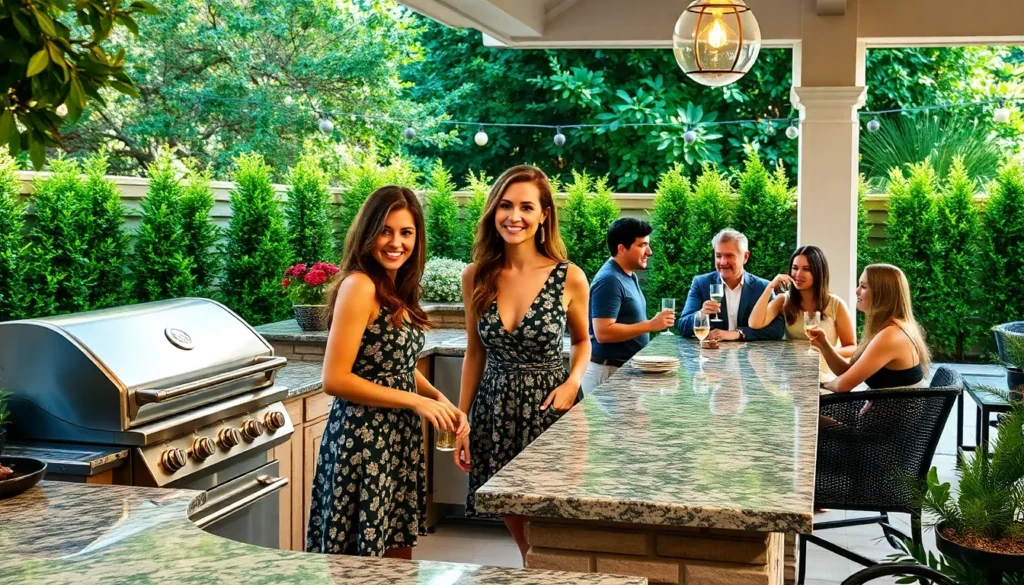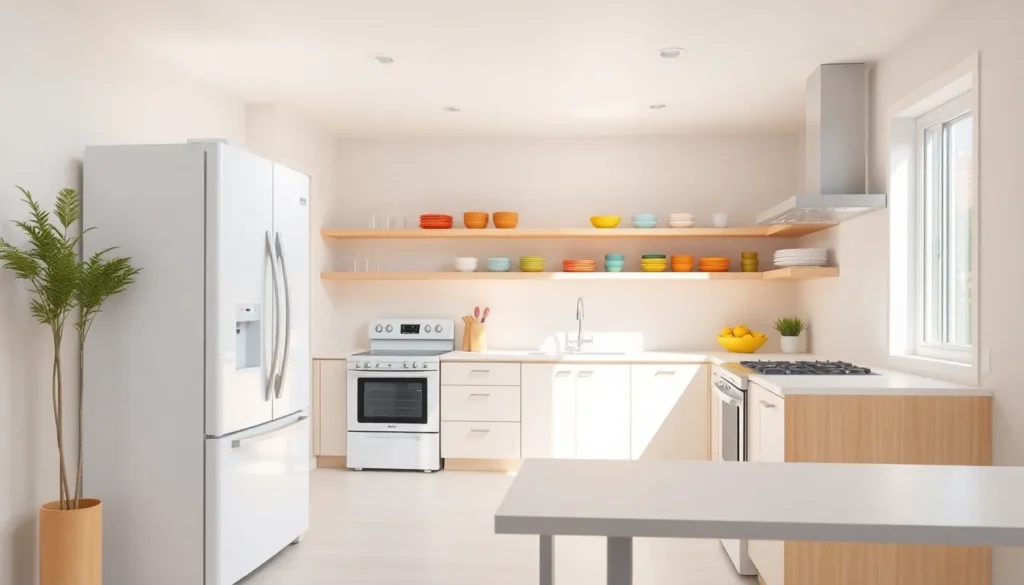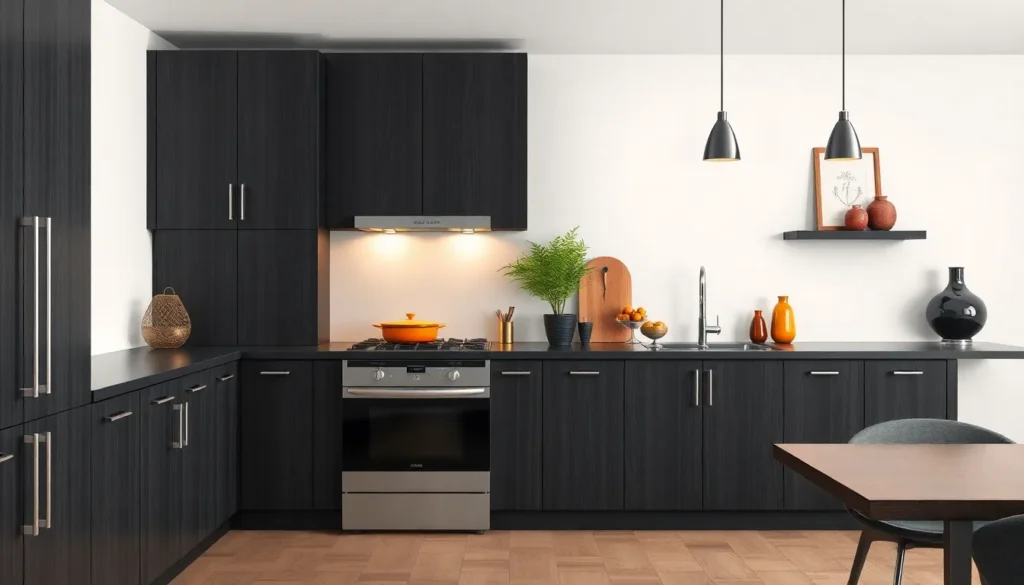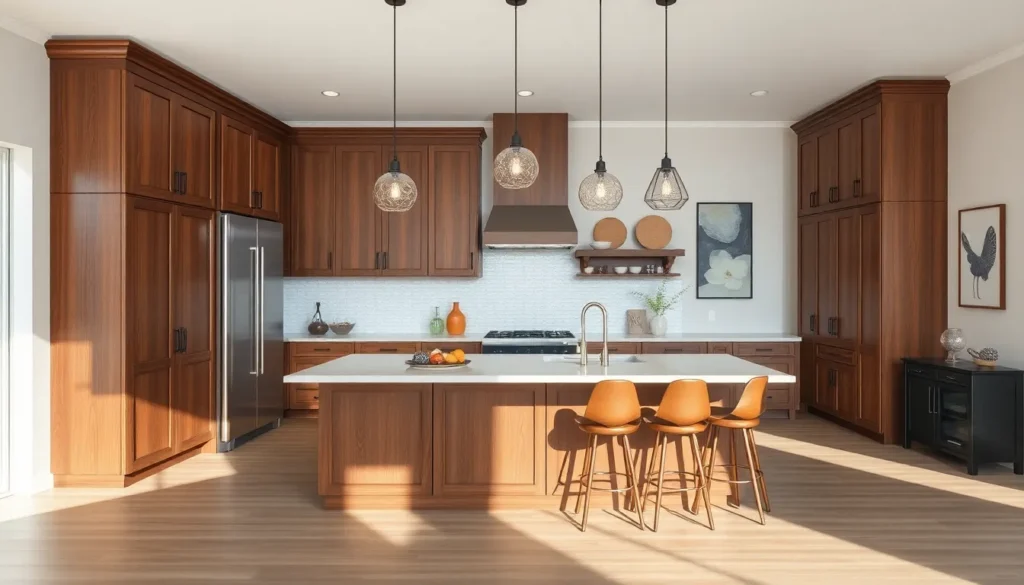The heart of every home often beats strongest in the kitchen, where families gather to share meals and create lasting memories. Designing a family kitchen goes beyond aesthetics; it’s about crafting a space that fosters connection, comfort, and functionality. With the right elements, a kitchen can become a welcoming hub for cooking, entertaining, and everyday life.
In today’s fast-paced world, a well-designed family kitchen must balance style and practicality. From choosing durable materials to optimizing layout for efficiency, every decision plays a crucial role in enhancing the family experience. This article explores essential tips and trends in family kitchen design, helping homeowners transform their cooking spaces into inviting environments that meet the needs of their loved ones.
Table of Contents
ToggleOverview of Family Kitchen Design
Family kitchen design integrates functionality, durability, and aesthetic appeal to foster connection among family members. Effective layouts accommodate culinary tasks and social interactions, ensuring smooth workflow and accessibility.
Key elements in family kitchen design include:
- Durable Materials: Opt for countertops and flooring made from materials like quartz, granite, or hardwood. These withstand daily wear and tear while maintaining visual appeal.
- Efficient Layouts: Design layouts that facilitate movement between key areas: cooking, preparation, and storage. U-shaped, L-shaped, or open-concept designs work well for creating a supportive environment.
- Family-Centric Features: Incorporate a large dining table or island for communal meals and activities. These features encourage family gatherings and enhance social connections.
- Ample Storage: Utilize cabinets, pantries, and drawer organizers to reduce clutter. Well-planned storage solutions help maintain an organized and practical kitchen space.
- Lighting: Install ambient, task, and accent lights to improve visibility and create a welcoming atmosphere. Well-placed lighting can transform the kitchen into a warm gathering spot.
- Sustainability: Consider energy-efficient appliances and eco-friendly materials. Sustainable choices resonate with environmentally conscious families and contribute to long-term savings.
Balancing these elements results in a family kitchen that meets practical needs while providing an inviting space for cooking and gathering.
Key Elements of Family Kitchen Design
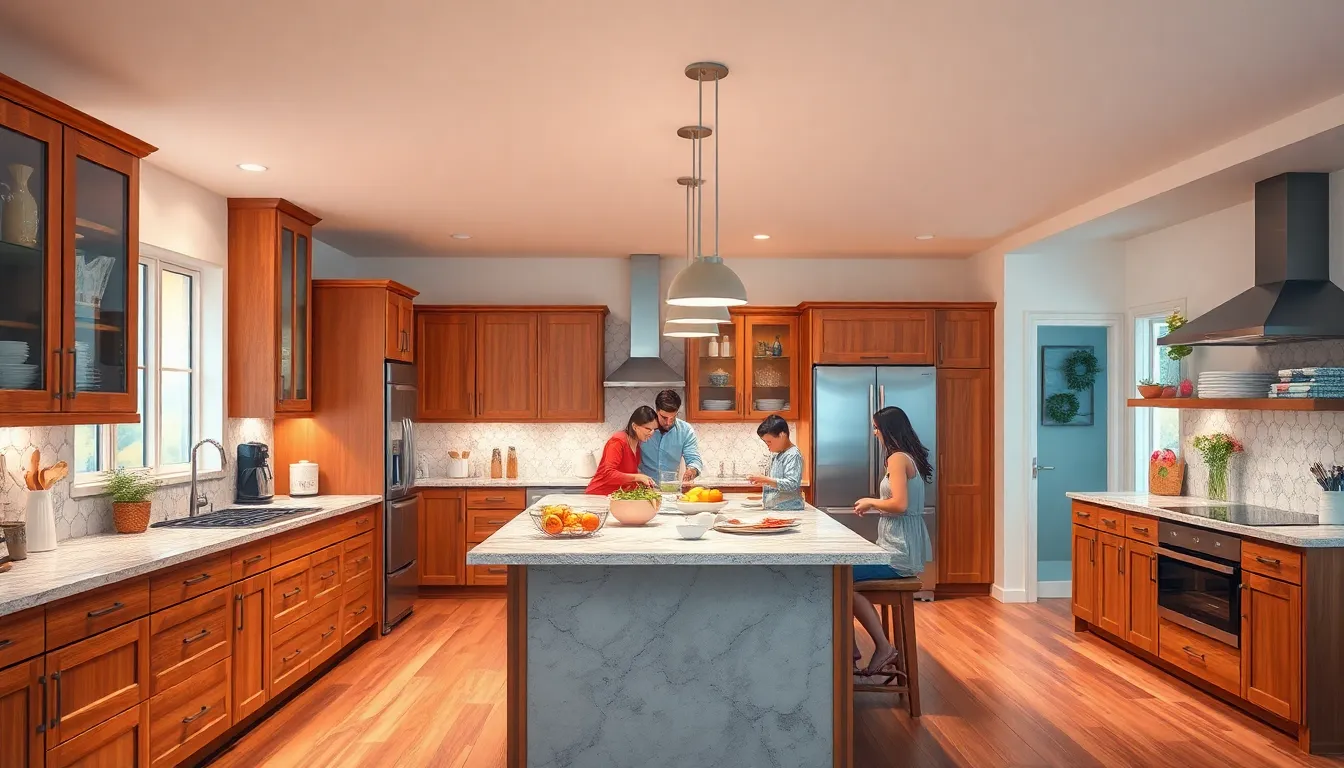
Family kitchen design emphasizes functionality and aesthetics, ensuring a space that fosters connection and comfort while serving practical purposes.
Functionality
Functionality in family kitchen design revolves around efficient layouts and adaptable workspaces. Key components include:
- Work Zones: Define specific areas for cooking, prep, and cleaning to streamline tasks.
- Open Layouts: Promote movement and interaction, especially when integrating living or dining areas.
- Ample Counter Space: Provides sufficient room for meal preparation and family activities.
- Storage Solutions: Utilize cabinets, drawers, and pantry space to minimize clutter and maintain organization, accommodating various kitchen tools and appliances.
- Durable Surfaces: Opt for materials like quartz or granite for counters that withstand frequent use and are easy to clean.
Aesthetics
- Color Schemes: Choose warm, inviting colors that enhance the kitchen’s overall ambiance and promote a cozy environment.
- Lighting Design: Incorporate a mix of ambient, task, and accent lighting to create a welcoming atmosphere while ensuring task areas are well-lit.
- Textures and Materials: Combine different textures through cabinetry, flooring, and fixtures to add depth and visual interest.
- Personal Touches: Integrate family photos or artwork that reflects personal style, enhancing the kitchen’s character.
- Style Consistency: Maintain a cohesive design by aligning kitchen elements with the home’s overall aesthetic, ensuring harmony between different spaces.
Popular Styles of Family Kitchen Design
Designing a family kitchen involves selecting a style that resonates with both functionality and aesthetics. Two popular styles include modern and traditional kitchens, each providing unique characteristics and benefits.
Modern
Modern family kitchens emphasize simplicity and functionality. Key features include:
- Clean Lines: Streamlined cabinetry and minimalistic designs create an uncluttered look.
- Open Concepts: Spaces flow together, encouraging family interaction and movement.
- Innovative Materials: Stainless steel, concrete, and glass are frequently used for a contemporary appeal.
- Neutral Color Palettes: Shades of white, gray, and black dominate, often accented by bold colors in decor.
- Integrated Technology: Smart appliances enhance efficiency and ease of use in daily routines.
These elements collectively foster a space that is not only stylish but also facilitates family gatherings and everyday activities.
Traditional
Traditional family kitchens evoke a sense of warmth and nostalgia, focusing on detail and craftsmanship. Prominent features include:
- Rich Wood Finishes: Solid wood cabinets and custom millwork add character and timelessness.
- Classic Fixtures: Petered lighting and ornate hardware enrich the visual appeal.
- Comforting Color Schemes: Warm tones such as cream, beige, and soft pastels create an inviting atmosphere.
- Functional Layouts: U-shaped or L-shaped designs offer efficient workflow while promoting family interaction.
- Detailed Accents: Crown molding, wainscoting, and decorative backsplashes enhance overall design.
Traditional kitchens prioritize comfort and elegance, making them a popular choice for families seeking a welcoming environment.
Tips for Designing a Family Kitchen
Designing a family kitchen involves careful consideration of functionality and comfort. Implement these tips to create an inviting and efficient cooking space.
Space Optimization
Maximize the kitchen’s layout with a well-planned workflow. Position the stove, refrigerator, and sink in a triangular formation to facilitate movement. Use cabinetry that extends to the ceiling to increase storage without sacrificing space. Incorporate multipurpose furniture, such as foldable tables or benches, to adapt to varying needs. Allow for adequate aisle width, ideally 36 inches, to maintain an unobstructed flow. Utilize corners with lazy Susans or pull-out shelves to make the most of every inch.
Choosing the Right Materials
Select durable materials to withstand daily use in a busy family environment. Opt for quartz or granite countertops for their resilience and low maintenance needs. Use hardwood or tile flooring for easy cleaning and durability. Incorporate cabinetry made from plywood or solid wood to enhance longevity. Consider using non-toxic finishes and paints to promote a healthy atmosphere. Choose energy-efficient appliances with stainless steel finishes, as they resist fingerprints and damage. These material choices contribute to both functionality and style, creating a family kitchen that lasts.
Creating a family kitchen that blends style and functionality is essential for fostering connection and comfort. By prioritizing durable materials and efficient layouts, homeowners can design a space that meets the demands of daily life while remaining inviting.
Incorporating family-centric features like large dining tables and ample storage solutions can significantly enhance the kitchen’s usability. With thoughtful design choices such as effective lighting and personal touches, the kitchen becomes a true heart of the home.
Whether opting for a modern or traditional style, the key is to ensure the kitchen reflects the family’s unique needs and lifestyle. Ultimately, a well-designed family kitchen not only serves its practical purpose but also nurtures lasting memories.




